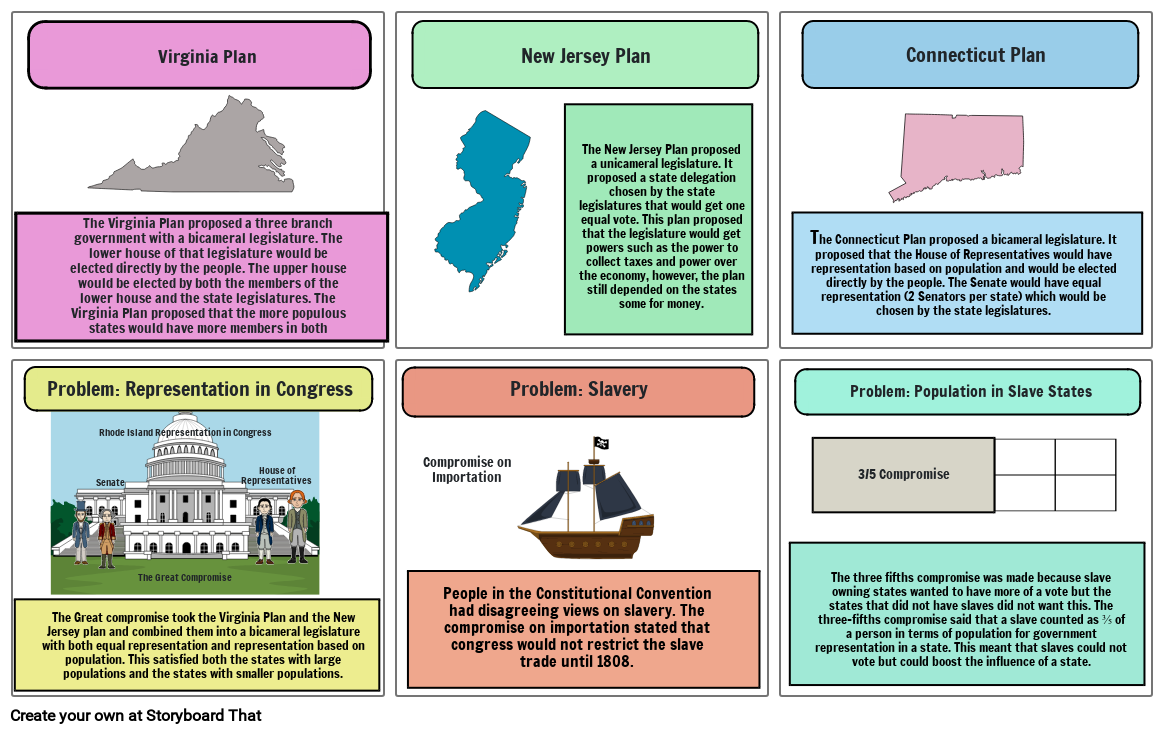Unknown Story

Siužetinės Linijos Tekstas
- The Virginia Plan proposed a three branch government with a bicameral legislature. The lower house of that legislature would be elected directly by the people. The upper house would be elected by both the members of the lower house and the state legislatures. The Virginia Plan proposed that the more populous states would have more members in both houses.
- Virginia Plan
- New Jersey Plan
- The New Jersey Plan proposed a unicameral legislature. It proposed a state delegation chosen by the state legislatures that would get one equal vote. This plan proposed that the legislature would get powers such as the power to collect taxes and power over the economy, however, the plan still depended on the states some for money.
- The Connecticut Plan proposed a bicameral legislature. It proposed that the House of Representatives would have representation based on population and would be elected directly by the people. The Senate would have equal representation (2 Senators per state) which would be chosen by the state legislatures.
- Connecticut Plan
- The Great compromise took the Virginia Plan and the New Jersey plan and combined them into a bicameral legislature with both equal representation and representation based on population. This satisfied both the states with large populations and the states with smaller populations.
- Problem: Representation in Congress
- Rhode Island Representation in Congress
- Senate
- The Great Compromise
- House of Representatives
- Problem: Slavery
- Compromise on Importation
- People in the Constitutional Convention had disagreeing views on slavery. The compromise on importation stated that congress would not restrict the slave trade until 1808.
- The three fifths compromise was made because slave owning states wanted to have more of a vote but the states that did not have slaves did not want this. The three-fifths compromise said that a slave counted as ⅗ of a person in terms of population for government representation in a state. This meant that slaves could not vote but could boost the influence of a state.
- Problem: Population in Slave States
- 3/5 Compromise
Sukurta daugiau nei 30 milijonų siužetinių lentelių

